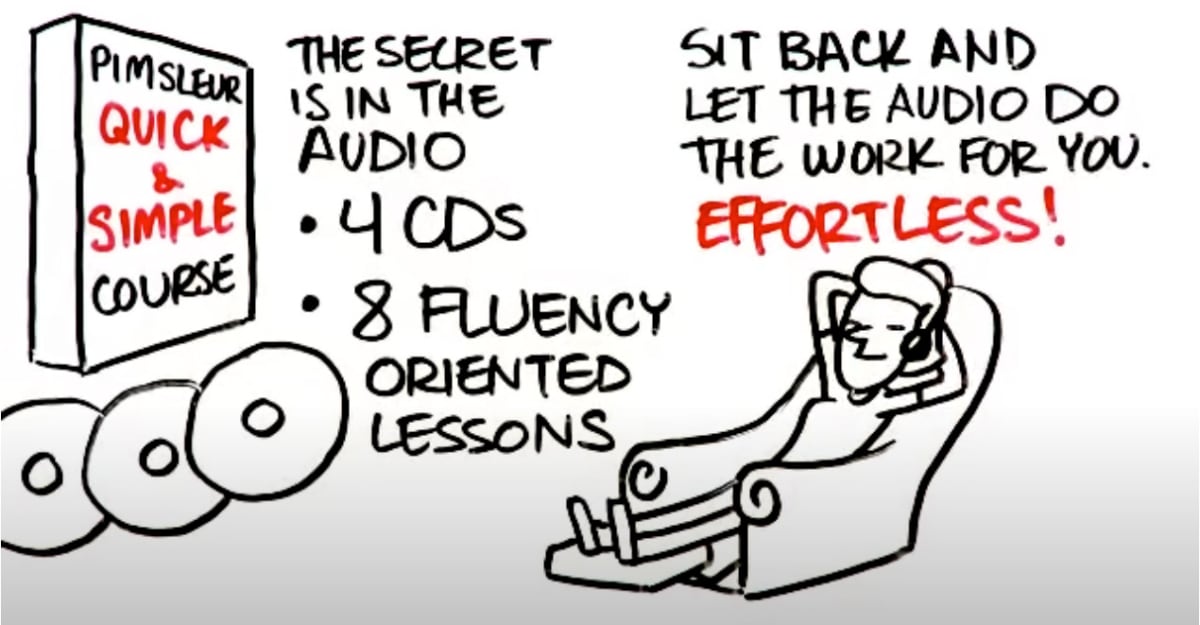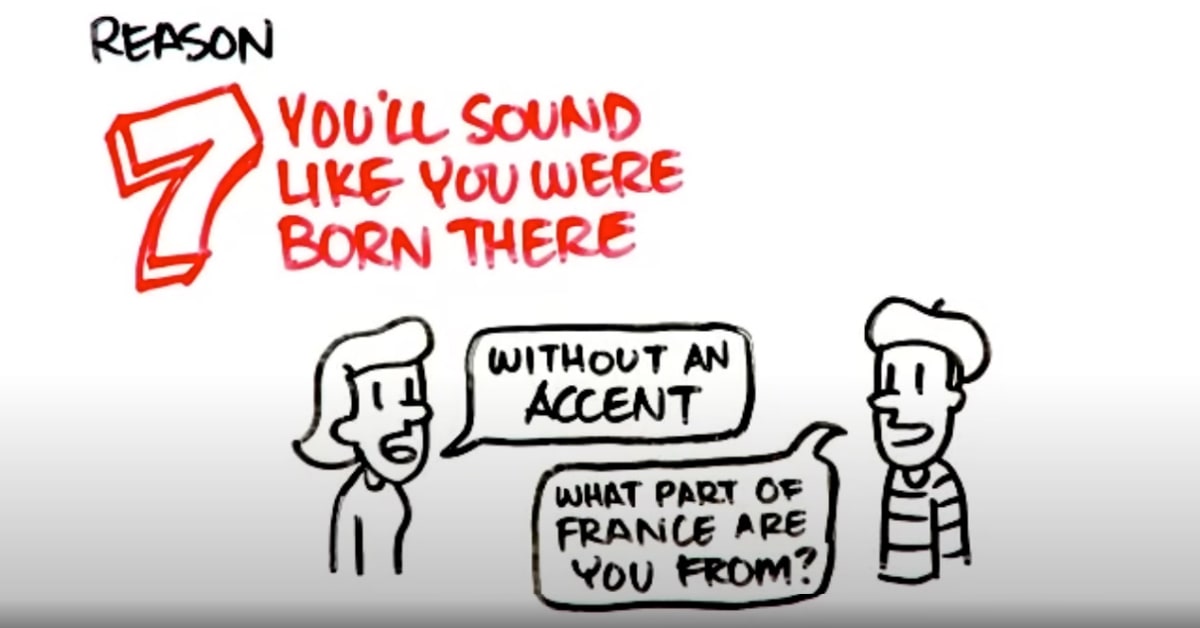Copywriting Friday: What part of France are you from?
Published: March 2024
Copywriting Friday highlights the tools and techniques of persuasive content. Some of the examples may seem dated, but the principles are timeless (and critical for conversion rate optimization). Enjoy.

Gary Halbert was a legendary copywriter. One of his sales letters mailed 800 million copies and that was in the days of snail mail, when postage was a big factor.
He once spoke to a group of “copy cubs” who wanted to learn from him. He asked:
“Let’s say you own a restaurant and I have a magic wand. I can grant you one wish as a competitive distinction that could make your restaurant take off. What would you wish for?”
Before you read more, think about how you would respond.
One person in the audience said she’d want to hire a famous chef. Another person wanted to have the best location in town. A third said he’d like to be known for how many celebrities ate there.
Halbert listened patiently and then said: “Those are good ideas, but I can beat all of you. If I had one wish, I’d ask for a starving crowd.”
If you have a starving crowd, or you’re the last gas station for the next 300 miles, then you don’t need to be a good copywriter or salesperson. You can simply be an order taker and set your price.
This article is for the rest of us. It’s about creative strategies for dealing with objections when you need to make a sale and when customers have plenty of choices.
The importance of objections
It’s common for companies to not address many or even any objections on their websites. Assuming they know what these objections are (and many don’t), perhaps companies ignore them because addressing them feels like focusing on the negative. They may think it’s better to talk about the benefits of their offering than to dwell on the negatives.
We beg to differ. We believe that such a focus does a disservice to visitors. Many of them are comparison shopping and deciding if the product or service will work for their situation. To increase conversions, we need to understand and remove the objections that are stopping qualified prospects.
To illustrate this process, we’ll use an excellent video from Pimsleur. The company has been offering language training for decades. It’s had to adapt from first providing printed materials, to CDs, and now to streaming services.
Three types of objections
When we work to improve the conversion rate of a client, we do what we internally call “O/CO.” That stands for “Objection/Counter-Objection” and we discuss it in our methodology. We use deep research to uncover as many objections as possible, and then we study what are the most-effective responses to those objections. Some of the best counter-objections come from star salespeople or phone-support people, who have perfected their responses over time.
How can you address a lot of objections without focusing on negatives? That’s exactly what the Pimsleur video does so well, in the course of handling three types of objections.
1. A clever way to address common objections
First, notice how Pimsleur doesn’t state the objection; instead, it’s implied by the counter-objection. Let’s call that approach “CO Only.” The video mentions several, like:
“No rote memorization.”
“Won’t study grammar.”
These types of objections are ones that people would probably not mind admitting to, as in: “I hate the feeling of being back in school, memorizing things.”
2. What about objections that may be strong, but people will not want to admit to them?
These are embarrassing objections, and it’s another reason Pimsleur’s CO-Only approach is brilliant. They don’t have to say:
“Are you lazy? Do you want to learn a language but don’t want to lift a finger to do it?”
Instead, they say:

Big copywriting point here: “Let the audio do the work for you.” There’s an enormous difference between work you do, and work done for you. Pimsleur got it right.
One good way to create a “done for you” benefit is to think about systems, which imply that something is being done for you. With Pimsleur, we hear about their “Accelerated Learning Methodology” which sounds scientific, but doesn’t sound like work.
3. A “stealth” type of objection
These objections are so taken for granted that they’ve become assumptions. For example, people may think:
To learn a language, of course I must learn how to read, write, and speak it.
Pimsleur demolishes that assumption by pointing out how some kings and queens never knew how to read and write, and how a couple of billion people right now can communicate just fine by knowing only how to speak a language.
Future pacing
This is another copy technique Pimsleur employs, and which you may have seen in a recent article of ours. When you see top athletes with their eyes closed, going through the motions of skiing or some other sport, that’s future pacing. It’s imagining what you want to achieve.
Pimsleur uses it when it says: “You’ll sound like you were born there.”

That’s the ultimate dream, right? For most people, their goal is to feel great while traveling, and maybe even impress people. It’s not to write letters in that language.
Using O/CO in your business
What’s your attitude toward gathering and addressing objections? If you’d rather not dwell on objections, you’re leaving money on the table. Your customers—whether corporations or individuals—want to know that they are making wise choices, and answering their objections will go a long way in that regard.
- Look for these three types of objections: obvious, embarrassing, and assumed. Then use your best salespeople to help you craft the strongest counter-objections.
- Think about your services or processes: Which of them might you combine into a named system that implies the work is being done for your customer?
As good as these suggestions are, make sure you don’t just take our word for it. Incorporate the counter-objections and systems language into tests, to see if they in fact make a difference in your conversions. That’s how to use copywriting techniques to make your website win on an ever-higher level.
See you next time on Copywriting Friday.
How much did you like this article?
What’s your goal today?
1. Hire us to grow your company
We’ve generated hundreds of millions for our clients, using our unique CRE Methodology™. To discover how we can help grow your business:
- Read our case studies, client success stories, and video testimonials.
- Learn about us, and our unique values, beliefs and quirks.
- Visit our “Services” page to see the process by which we assess whether we’re a good fit for each other.
- Schedule your FREE website strategy session with one of our renowned experts.
Schedule your FREE strategy session
2. Learn how to do conversion
Download a free copy of our Amazon #1 best-selling book, Making Websites Win, recommended by Google, Facebook, Microsoft, Moz, Econsultancy, and many more industry leaders. You’ll also be subscribed to our email newsletter and notified whenever we publish new articles or have something interesting to share.
Browse hundreds of articles, containing an amazing number of useful tools and techniques. Many readers tell us they have doubled their sales by following the advice in these articles.
Download a free copy of our best-selling book
3. Join our team
If you want to join our team—or discover why our team members love working with us—then see our “Careers” page.
4. Contact us
We help businesses worldwide, so get in touch!
© 2025 Conversion Rate Experts Limited. All rights reserved.










